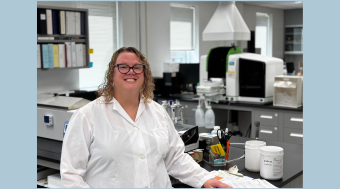How the Results Work
Safe to swim: Below 235 colony forming units (cfu) of E. coli
Warning: 236 to 1,000 cfu– Swim at your own risk
Closed: Over 1,000 cfu – Beach is considered unsafe
“When a beach hits that warning or closure threshold, we immediately notify our Environmental Health Team, who posts signage at the site,” Hein said. “We also notify the public online so they know before heading out.”
In the case of a closure, the department aims to retest the site within 24 to 48 hours, weather permitting. However, conditions such as rain can delay retesting efforts.
“We had a closure at Swarthout Park recently, but we also had two days of rain,” Hein noted. “Rain can elevate bacteria levels, so we decided to hold off retesting until things settled.”
Eight Beaches
The eight beaches tested weekly are Black River Beach, Pettibone Beach, Lake Neshonoc Swarthout Park, Whispering Pines, Bluebird Springs, Goose Island Beach, Neshonoc Lakeside Campground and Airport Beach.
Hein emphasized that water quality is dynamic. “Things are always changing — hour to hour, even minute to minute. Animals, weather, currents and even wind can all affect bacteria levels,” she said. “Our testing gives a really solid scientific snapshot, but it’s still important for the public to use good judgment.”
Beyond beach testing, the Health Department lab also plays a year-round role in keeping La Crosse County healthy. The lab monitors well water, streams, swimming pools, restaurant water supplies, and more. They test for a wide variety of contaminants — helping ensure food safety, public health, and recreational enjoyment across the county.
“We want people to know this lab exists,” Hein said. “We’re working all year long to protect the health of our community in ways most people don’t see.”
Beach water monitoring results are typically posted weekly on Tuesdays at lacrossecounty.org/health and shared on La Crosse County’s social media platforms.



